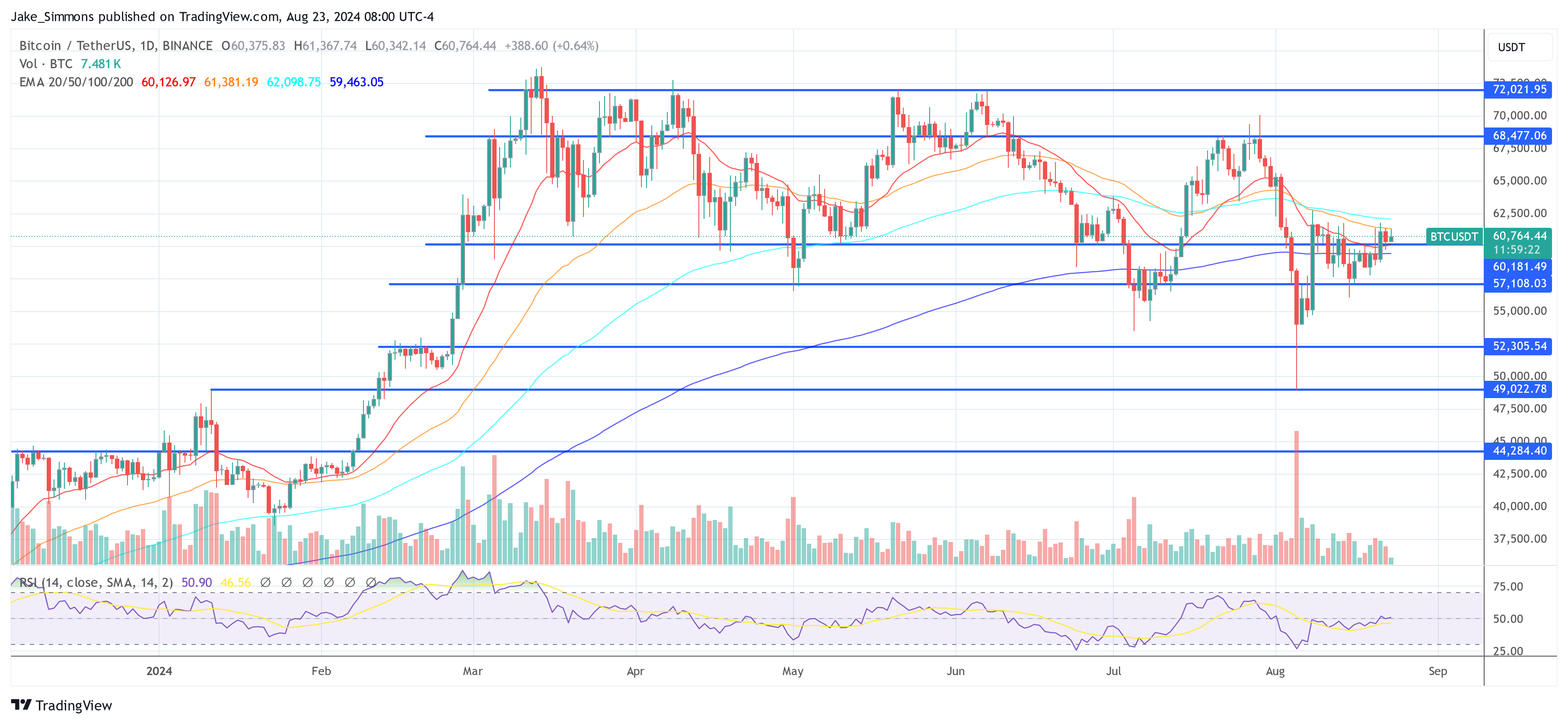Henrik Zeberg, Head Macro Economist at Swissblock, has reasserted his prediction that a US recession is inevitable, but not before a dramatic upswing in financial markets, including a substantial rally for Bitcoin to heights between $115,000 and $120,000. In his most recent analysis posted on X, Zeberg expounded upon the cyclical nature of markets and how they align with historical economic indicators and current fiscal policies.
“REMEMBER!? In December 2022, everybody was BEARISH! I was BULLISH! We were told that ‘Imminent Crash’ was ahead of us – despite the fact that the market bottomed in October 2022,” Zeberg reiterated in his post. He laid out his refined predictions for major market indices and Bitcoin, pointing to a forthcoming “Blow Off Top”.
Bitcoin Faces Its First Recession Ever
A “blow-off top” refers to a sharp, rapid increase in the price in financial markets, followed by an equally sharp decline. This pattern is characterized by intense buying pressure that drives prices to extreme highs, often driven by speculative or euphoric behavior among traders. This surge in prices is usually unsustainable, leading to a significant sell-off as traders take profits or react to overbought conditions.
The blow of the top predicted by Zeberg could be triggered by the US Federal Reserve injecting massive amounts of liquidity into circulation to prevent a recession. Based on this, Zeberg forecast that the S&P 500 will rise to 6,100-6,300, the Nasdaq to 24,000-25,000, the Dow Jones Industrial Average to roughly 45,000, and Bitcoin to $115,000-120,000.
Zeberg’s bullish stance contrasts starkly with his dire prediction for the post-rally period. “Now….. we are not at the top – yet! But Recession IS coming – and it will be the worst since 1929. Major Bear market (in 2 phases; Deflationary and Stagflationary – separated by a mid-way bounce as Fed enters in 2025),” he explained, suggesting a complex recessionary cycle influenced by both market dynamics and Federal Reserve (Fed) policies.
The economist’s skepticism toward the effectiveness of impending Federal Reserve rate cuts is rooted in a detailed critique of similar historical measures. Despite the market’s expectation of a 25 basis points cut at the next FOMC meeting in September—a move supported by 73.5% of market participants (according to the CME FedWatch tool), with a smaller fraction (26.5%) anticipating a more aggressive 50 basis points cut—Zeberg remains unconvinced these will forestall recessionary pressures.
“But… but… Fed rate cuts…. ?? The Global Economy is breaking. US Recession begins December 2024,” Zeberg stated, reflecting his belief that short-term liquidity injections are insufficient to counteract deeper economic malaises. He points to the liquidity cycle metrics comparable to those seen in 2007, questioning the effectiveness of such strategies in preventing the 2008 financial crisis.
Furthermore, Zeberg highlights the recent end of the inversion between the US. 2-year and 10-year Treasury yields, traditionally viewed as a predictor of economic downturns. The inversion, where short-term yields exceed long-term yields, is typically a signal of investor uncertainty about the near-term economic outlook.
Another pillar of Zeberg’s argument is the recent job market data. The US Bureau of Labor Statistics revised its March 2024 total employment estimates downward by 818,000—the largest revision in 15 years—indicating significant weakness in the job market, far more pronounced than initial estimates suggested. “Economy much weaker than expected,” Zeberg commented.
At press time, Bitcoin traded at $60,764.





